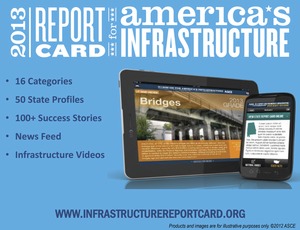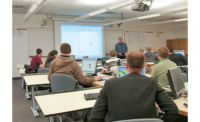
Engineers are known for meticulous, methodical problem-solving, and this approach is paying off for the American Society of Civil Engineers. Launching its first report card on U.S. infrastructure in 1998, the society continues to issue new ratings in 16 infrastructure categories every four years, and it has been making significant improvements in the process. The newest report is intriguing and fun to read—it's not just doom and gloom.
The overall grade in ASCE's 2013 Report Card for America's Infrastructure managed to inch up from a cumulative D in 2009 to overall GPA of D+ this year. That may not seem like much to most people, but considering the vast scale of this nation's infrastructure, it is significant. And the assessment clearly documents the tie between investments and the infrastructure categories that are improving.
For example, as communities invest in recycling programs, the solid-waste category has made steady progress. It is the first category to receive a grade of B- as Americans recycled or composted 85 million tons of the 250 million tons of solid waste generated in 2010. This 34% recycling rate is more than double the 14.5% rate in 1980.
Meanwhile, as freight and passenger rail systems in 2009 invested $75 billion in tracks, bridges and tunnels and added capacity, the nation's rail infrastructure grade has improved from a C- to a C+.
Continuous Improvement
ASCE keeps providing more information and improving the report card's format:
•In addition to letter-grade assessments, each report now makes recommendations about how to raise the grades and offers solutions that have been proven to work.
•A series of economic studies, called "Failure to Act" and commissioned by ASCE, found a clear tie between investing in infrastructure and economic growth. It also tallied the economic cost of doing nothing.
•For the first time this year, the report card collected success stories from every state about how investments are improving infrastructure one community at a time.
•The society invested in an app for tablets and smart phones to put the report card and all its data at America's fingertips.
Business wisdom tells us that what gets measured gets improved. ASCE's Report Card Advisory Council mobilizes 30-plus member experts who volunteer to tackle this daunting task. The 2013 report card shows that by measuring and making the right investments, the U.S. can improve its grades.



Post a comment to this article
Report Abusive Comment